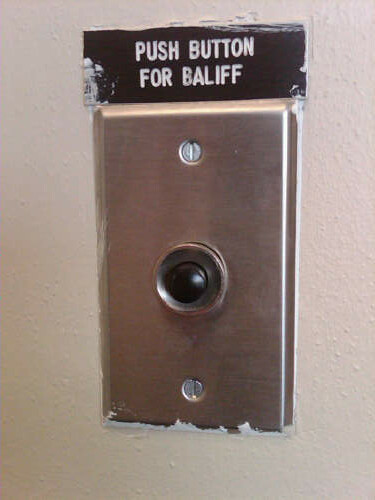I recently had the distinctly new opportunity for me to sit on a jury for a driving while intoxicated (DWI) case. Prior to this week, my only justice system participation included a few speeding tickets in my youth and jury duty that mainly consisted of sitting in the over-crowded room for potential jurors waiting to be
All of that changed for me as I sat with 15 other citizens on a jury panel being questioned during voir dire and ultimately selected among the six jurors for the case.
How exactly does this fit into a communications / public relations-focused blog? The Answer: Nonverbal communication played a factor in various stages of the case.
I want to focus on the face-to-face interaction from a juror's perspective that can be classified into three principal areas: environmental conditions where communication takes place, the physical characteristics of the communicators, and behaviors of communicators during interaction.
[Knapp & Hall (2007) Nonverbal Communication in Human Interaction.]
Environmental conditions
- Not in Kansas anymore - A courtroom is a very intimidating setting. If you have never participated in the space it can be difficult to understand the culture and norms (especially if your only perspective on a jury has been on television or in the movies.)
- While being questioned inside the courtroom by both the prosecuting and defense teams, it was hard to make value judgments about about answers being given and whether or not the "right" or "wrong" answer would get you excluded from (or included on) the final jury roster.
- A book and its cover - I observed two very different sets of legal teams. One included a very polished, professional front. The other seemed to have a more difficult time exuding the confidence and character the one would expect (or hope) from a lawyer.
- Once picked to be on the jury, I was interested (and pleased) in the fact that it did seem that the final six was a cross-section of the citizens from the panel in age, sex, race, and personal experience.
- Do you cross your arms? During voir dire, we were told at one point that, "it concerns us when we see jurors cross their arms," by one of the lawyers. This struck me as odd that arms crossed as a nonverbal communication cue is still being taught to have a stigma attached when crossing one's arms sometimes is a comfortable way to sit or is a sign of being cold.
- After being told about crossing arms, I noticed no less than four potential jurors switch, either to or from an arms crossed position.
- During the trial other behaviors came into play such as the those of the defendant, witnesses, legal teams, and even the judge. We watched how the lawyers conducted themselves in front of each other, the judge, and the jury. We noted things about the witnesses that played into their credibility.
To be clear, I did in fact pay attention to the actual case, facts, witnesses, and evidence. These thoughts on nonverbal communication is a reflection on the experience. However, it is worth telling you that during deliberations, the conversation hinted at relevant nonverbal communication that took place: juror comfort, lawyer attire, witness speech patterns, and even the judge who read from a newspaper.
Ultimately the case was decided based on the facts and evidence of the case within the framework of the legal charge we were given, but I am convinced nonverbal communication played an important role in the process.
We've come a long way
Being on a jury was actually pretty interesting. It helps that I was able to turn the experience into a blog post, but I am thankful to have had the opportunity. Typically, society pokes fun at jury duty and we joke about different ways to get out of serving. But, when it comes down to it, our system of a jury of one's peers is actually a very empowering and enlighted system of jurisprudence.
Don't believe me? Tell it to the witch.


![Reblog this post [with Zemanta]](http://img.zemanta.com/reblog_e.png?x-id=8a667da2-0960-4962-80d6-830b90b4fc50)